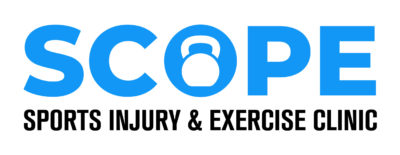When working with athletes who are struggling with injury and/or pain, a common question is can I still train? It is usually advised not to train if you have pain or injury. Pain is a sign that something is wrong, and the body needs some form of change. It is always advised to seek out an opinion from a health practitioner before training. However, sometimes we are training for an event or competition and need to train through some pain to achieve these goals. In these cases, assuming a high pain level (5+/10) or inflammation is NOT present then we may be able to proceed with caution.
Below are 5 tips for training if you have pain.
- Know your diagnosis. If you have pain and want to/need to train it is important to know what is the cause of your pain. If you know what the cause is you can make a better judgement as to which exercises you will tolerate and which may be aggravating. This may also give you an indication as to the best time to train. For example, if you have disc related spine pain you may want to avoid training first thing in the morning. If you have postural or work-related pain that is worse at the end of the day you may want to train in the morning or midday.
- Listen to your body. Your pain will usually tell you what you can or cant do. Before you train, check your range of motion by running through the movement patterns you will perform in your session. If there is a limitation in your movement due to pain, it is probably not worth training in that position. For example, if you will be pressing weight above your head and you test your shoulder range of motion in an overhead position and there is pain, its best not to train that exercise at that time.
- If there is pain during training, you may want to experiment with some of your training variables. Try lowering the weight, changing position/exercise change the speed, distance or time. If you can find a tolerable exercise that doesn’t cause pain work with that.
- Limit the amount of exercises you do in a session. By doing this you can figure out which positions/movements are aggravating, and which ones are tolerable. For example, if you are going to do a session, pick 2-3 exercises only and observe how your body responds both during AND 24hrs after.
- Longer recovery times. When training with pain you will need to allow more time for the body to recover and heal. Depending on the athlete’s requirements the rest time will vary. I usually would advise to train with 1-2 days of rest in between.
Chase the diagnosis first, seek assistance from practitioners and coaches & listen to your body.
